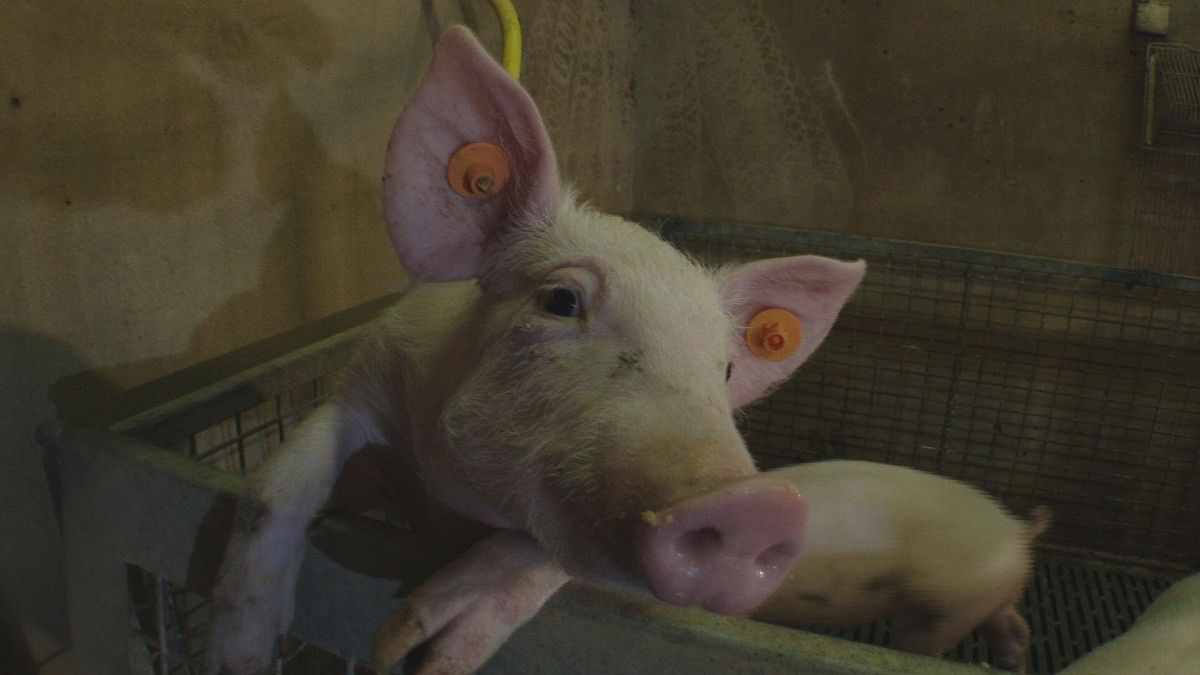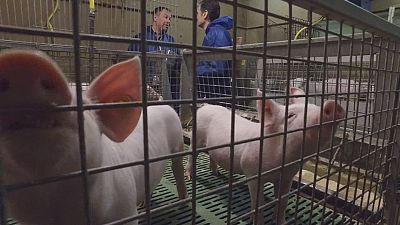In this week’s Futuris we look at an ambitious research project appears to have set out to prove the old adage that ‘you are what you eat’ by
In this week’s Futuris we look at an ambitious research project appears to have set out to prove the old adage that ‘you are what you eat’ by improving the health of animals.
Scientists in Belgium are testing on piglets with an experimental feed made up from olive oil waste and a mixture of soya and cereals. It’s not just a culinary caprice; they want to see if this menu boosts the animals’ health and productivity.
“Good growth. Good feed intake. And this translates into a lower consumption of feed per unit of meat produced.” said Geert Bruggeman, microbiologist at Nutrition Sciences N.V.
“We looked at the state of their gastro- intestinal tract, we also looked at the immunological systems of the animals. And everything was fine”.
To enter the animal feed chain, food waste has first to be dried to increase its shelf-life, in a fast, safe, energy efficient way.
So scientists from this European research project developed a prototype. It’s able to dry products like carrot or yogurt leftovers by simply adding water.
Bio-engineer Bart Van Droogenbroeck from Belgium’s Institute for Agriculture and Fisheries research explained: “In the first section of the prototype you have a hot water bath. And this energy is transferred to the plastic belt and then into the moisture product. It goes very quickly so it allows you to dry the food product in 3 to 5 minutes, and that is very fast compared to other systems.”
“We are in fact heating the water. And the energy in this hot water is evaporating the water that normally is inside the food product and causes the food spoilage,” he said.
Around 100 million tonnes of food are wasted annually in the EU.So scientists had plenty of ground to identify the food products that can be richer in elements like oligosaccharides, peptides or antioxidants that are good for farm animals’ wellbeing and, eventually, for their meat productivity.
“A (food) product that is drying is losing its heat. So it will keep cold. And in that way we preserve vitamins, colour, nutrients, antioxidants, flavor… we keep all those elements in the final food product, but in a concentrated way,” explained” Karen Verstraete, food technologist at ILVO.
Sentiments shared by Kathy Elst, Process Technologist at the Flemish Institute for Technological Research : “We want to focus even more on food waste that is not valorised at this moment, like onion skins. And we really want to analyze, in even more details, what fractions, which components inside these wastes are more active and have the highest biological effect on the animal so that we can adapt the process to tailor it even more”.
Promising waste food was tested in pigs and poultry, and researchers say they were able to come up with some concrete results.
“We have produced a great catalogue of 42 food waste products that are currently generated all over Europe. These waste products have been completely characterized from very different points of view: chemical, physical and microbiological; but also on their safety to identify the most interesting food waste as future animal feed,” said Montse Jorba Rafart, NOSHAN project coordinator.
Researchers hope that new future animal feed could become real commercial products in less than 2 or 3 years.




